Feast Your Eyes on the Finest Luxury Apartment Buildings of Gilded Age Brooklyn
There’s nothing like a Gilded Age apartment to set the heart racing — or to inspire a swap for one’s first born, as the movie Rosemary’s Baby so famously depicted. That particularly coveted real estate showstopper was located in Manhattan’s Dakota building, home to stars from John Lennon to Lauren Bacall. But Brooklyn has its…

Photo by Suzanne Spellen
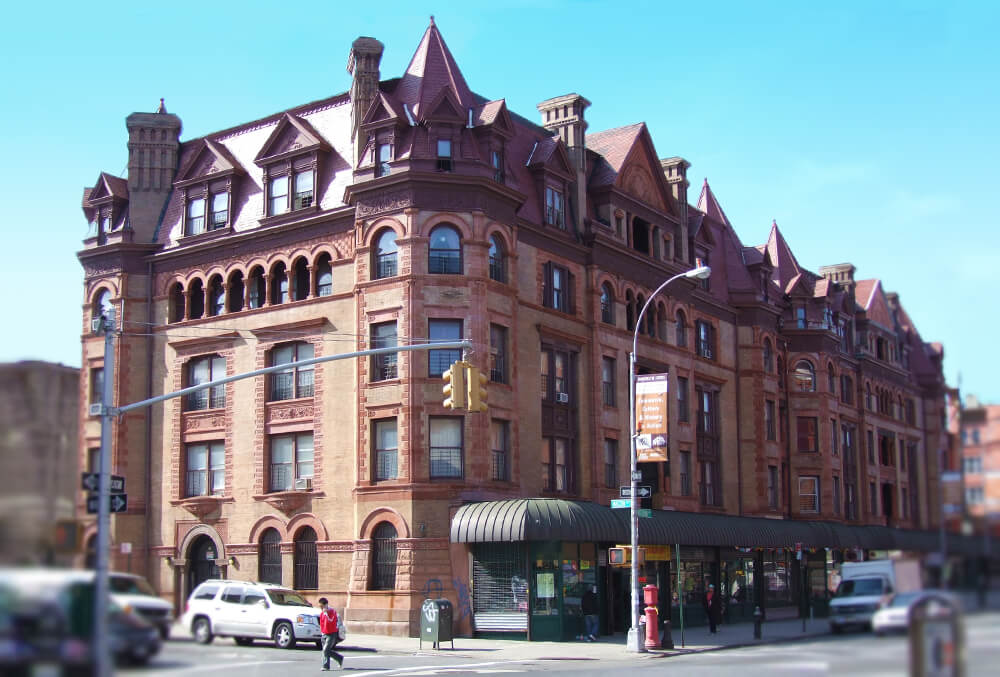
There’s nothing like a Gilded Age apartment to set the heart racing — or to inspire a swap for one’s first born, as the movie Rosemary’s Baby so famously depicted. That particularly coveted real estate showstopper was located in Manhattan’s Dakota building, home to stars from John Lennon to Lauren Bacall.
But Brooklyn has its grand apartment buildings too. These immense elaborate structures attracted admiration like no others — and they still do today.
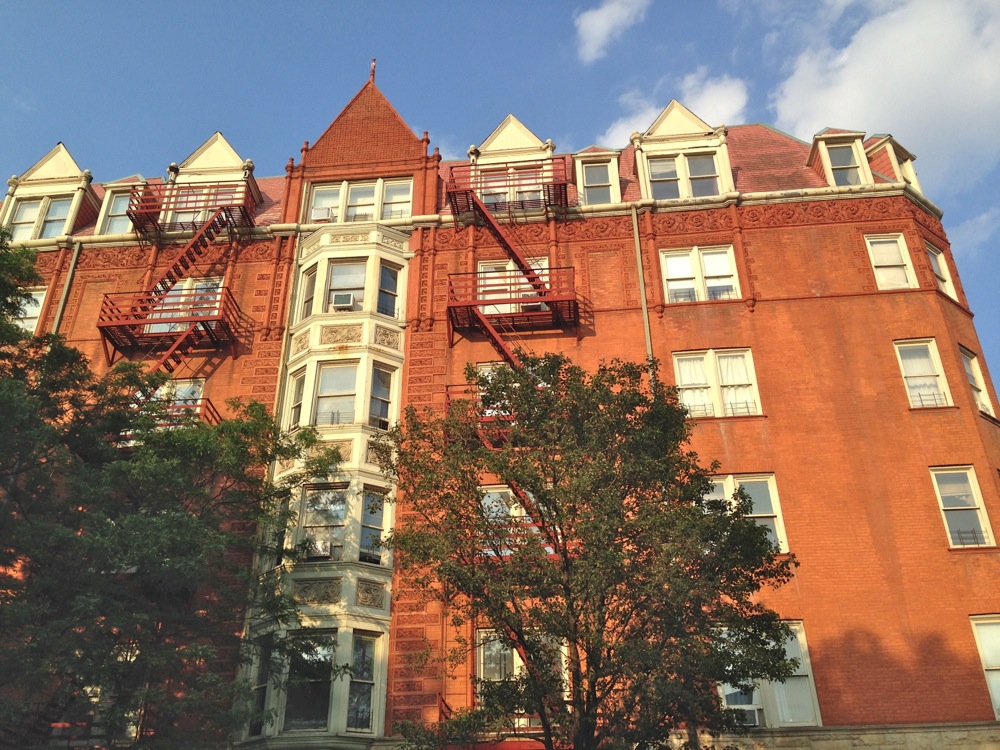
Clinton Hill’s Vendome.
In affluent Clinton Hill, the first apartment building — the Vendome — was built in 1887, designed by Halstead and Fowler.
The Romanesque Revival castle on the corner of Gates and Grand originally had 17 luxe apartments, each with seven rooms and a bathroom. Ads in the Brooklyn Eagle in 1888 boasted of the building’s elevator, private billiard room, smoking room, steam heat, boot black, telephones, telegraph and messenger service, and an available caterer.
Today, the building has 24 units, and an ongoing conflict between longtime renters and the building’s owner.
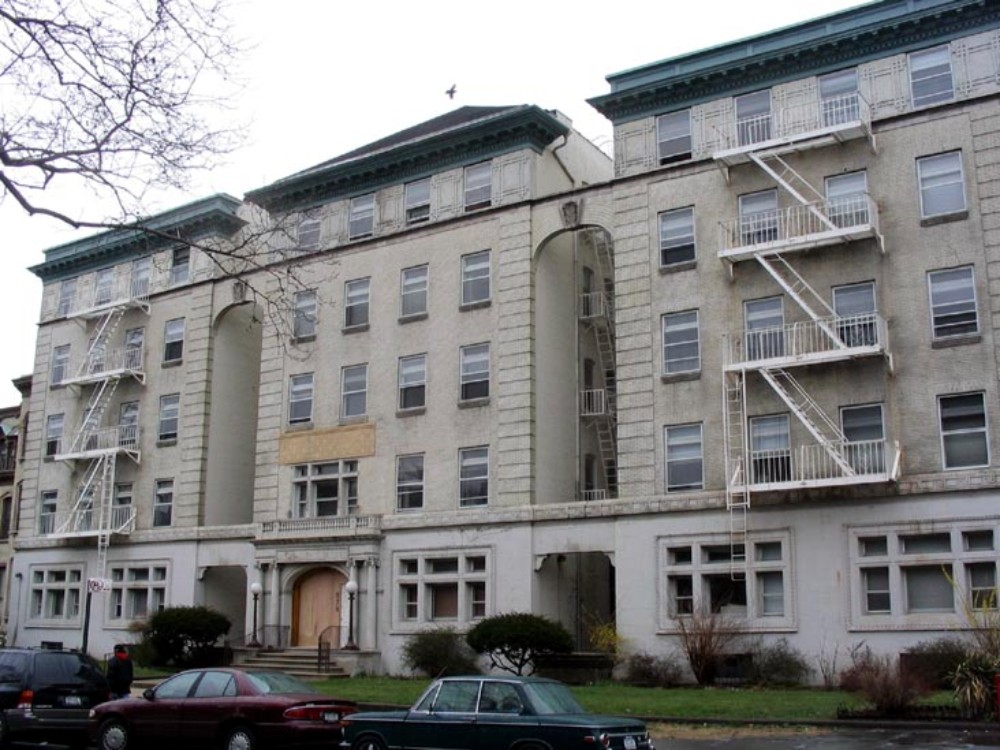
The Clinton.
The Clinton, built in 1897, on Clinton Avenue, near Dekalb Avenue, is an even finer apartment building. Its E configuration maximizes light and air in all of the apartments. When it was built, it had only 30 spacious apartments, two on each floor in each wing.
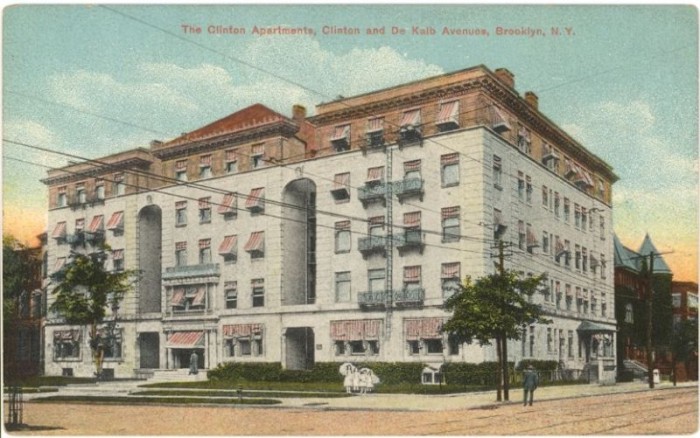
Each apartment was huge, with seven to eight rooms, all luxuriously decked out with the finest woodwork, floors and finishings. The apartments had the latest in plumbing and appliances, electric lights, telephones, steam heat, elevators, and all of the new modern conveniences.
There were even “hall boys” who ran errands. One could live here, have the usual number of servants and enjoy living on the premiere block of posh Clinton Hill.
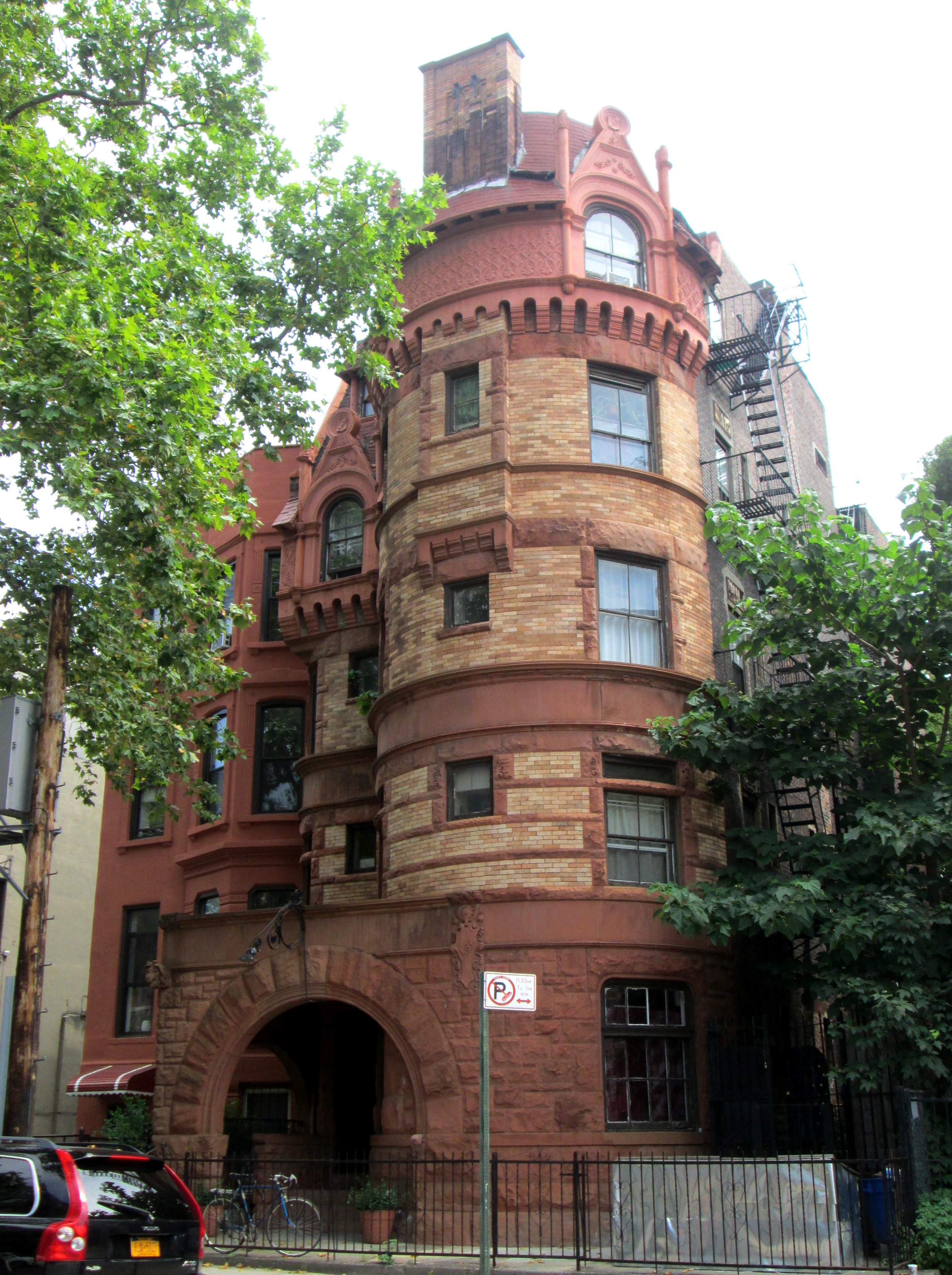
A castle at 487 Clinton Avenue.
Nearby, Langston and Dahlander’s Loire Valley Chateau-like building at 487 Clinton, near Fulton Street (1892), is considered by many to be the finest multiple-unit dwelling in the Clinton Hill Historic District.
The main entrance and hallway to the building took up the left side wing on the ground floor, and led to the elevators and stairs in the back. That left room for 29 remaining apartments. The apartments included a parlor, dining room, kitchen, servant’s room, three bedrooms and a full bathroom along their length. The parlor and dining room, at the front, were full apartment width, with a long hallway opening up to the servant’s areas, the bedrooms and bathroom.
The finishings were in the Colonial mode, with both gas and electric lighting, gas ranges, the finest in new plumbing fixtures and tile, as well as fine woodwork, floors and fireplaces.
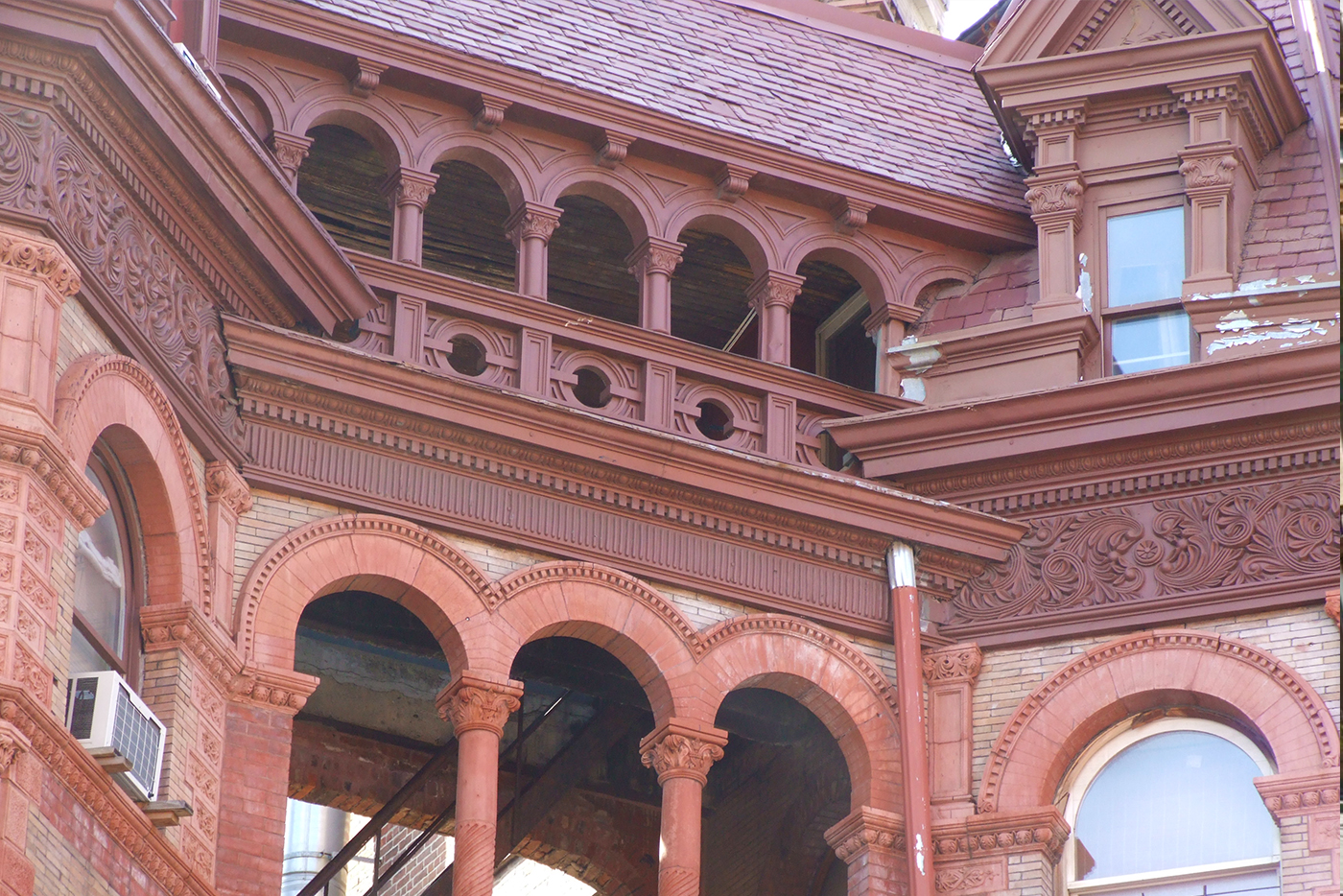
Bed Stuy’s Alhambra.
Over in the prosperous communities of Bedford and St. Marks, an enterprising developer, Louis F. Seitz, commissioned a talented local architect named Montrose Morris to design three apartment buildings suitable for the upper classes.
The first, the Alhambra on Nostrand Avenue — pictured at top — was built in 1889 across the street from the new Girls High School. It is a block-long red brick and terra cotta Romanesque Revival masterpiece, with open loggias and balconies breaking up the strong lines of the Nostrand Avenue facade, the entire building ornamented with terra cotta bands and friezes.
Originally, the building had 30 apartments, six on each of the five floors, all with eight or nine rooms. Each apartment had a reception room, library, dining room, kitchen, bathroom and three or four bedrooms.
Each apartment was arranged with wide sliding doors, to enable all of the public rooms to be opened up into one large room for receptions.
The building provided a storeroom for each apartment, laundry and drying rooms were available, the building was lit by electricity, and a janitor, engineer and hall boys were on staff. Louis Seitz himself had an apartment here.
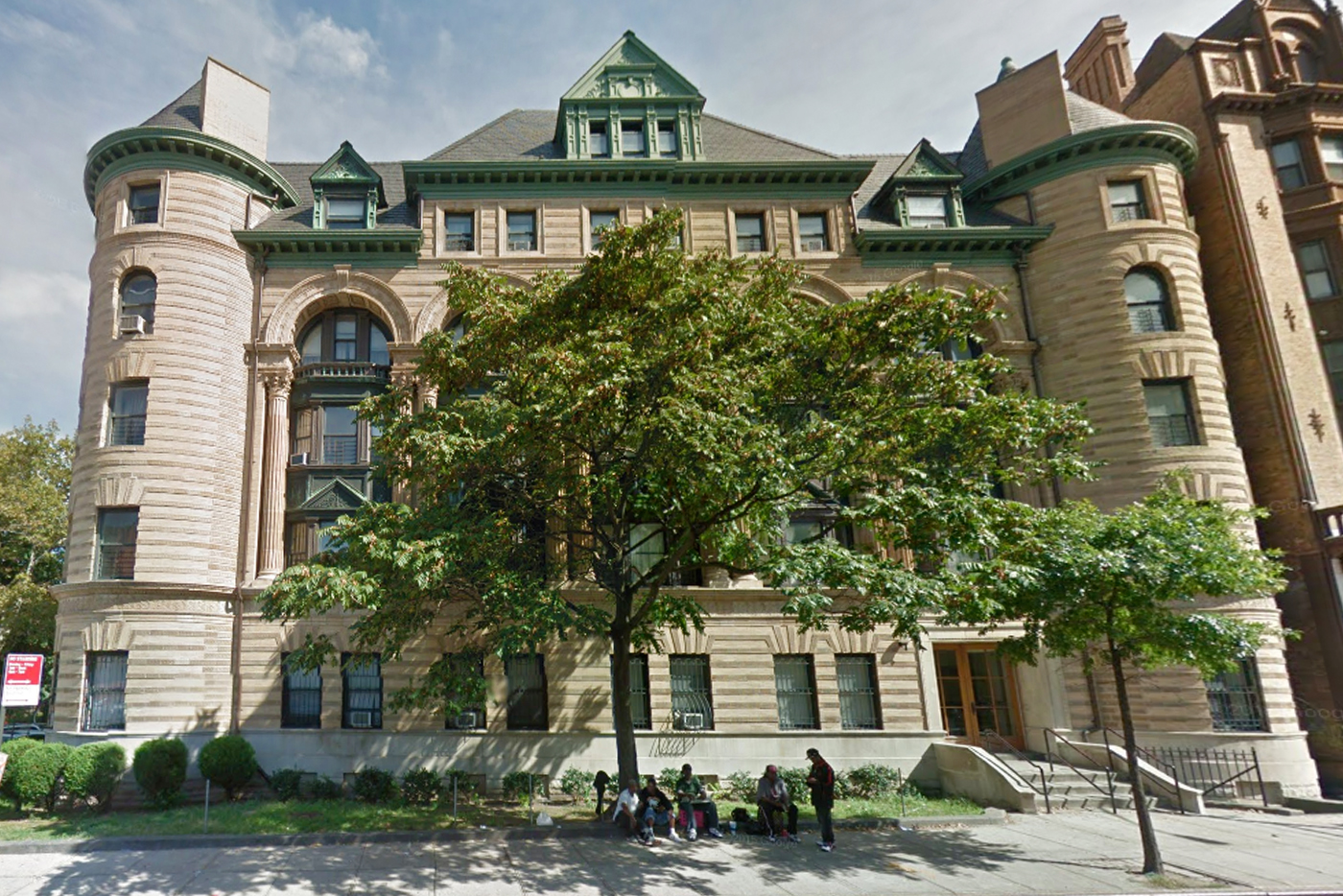
Crown Heights’ Imperial Apartments.
With the great success of the Alhambra, Morris went on to design the Imperial Apartments in nearby Grant Square. Said to have been inspired by McKim, Mead and White’s Hotel Imperial, this French Renaissance Revival Castle, built in 1892, was described by the Brooklyn Eagle as an architectural dream in cream and white.
It boasts monumental Palladian arches, two story fluted columns and is ornamented by alternating row of brick and terra cotta trim, under a mansard roof.
Inside, the 25 apartments of seven-plus rooms were set up similarly to those in the Alhambra, with pocket doors opening up the spaces into one large room, all furnished in the finest oak, mahogany, and other woods, with all of the best of modern conveniences.
The Eagle went on to say that the Imperial was one of the finest apartment buildings in Brooklyn, and was equal to Manhattan’s Dakota.
At the turn of the century, the census showed among the occupants an importer, as well as several lawyers and stockbrokers.
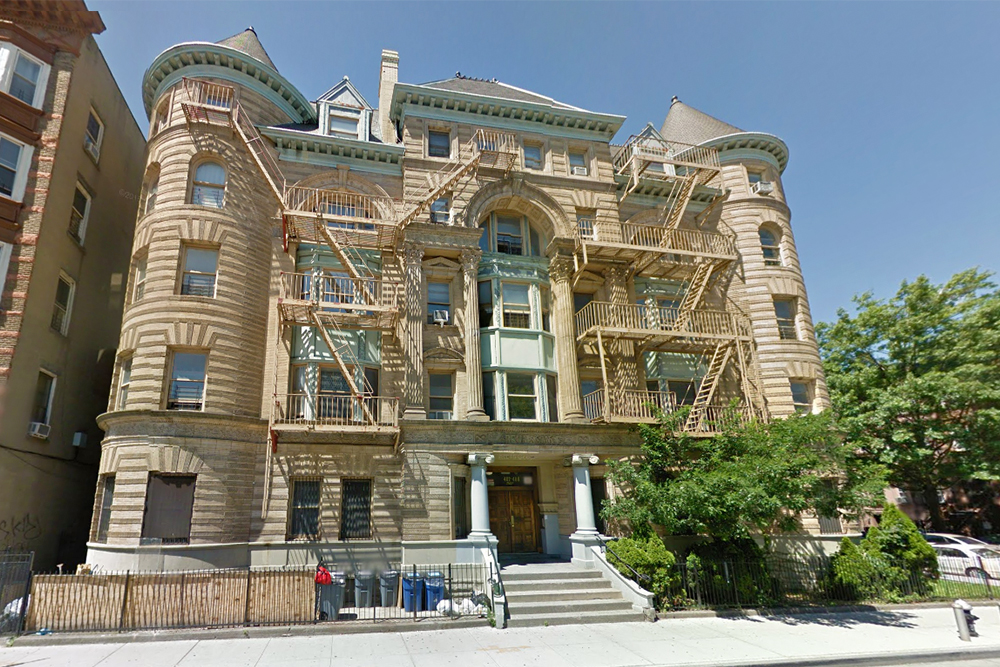
The Renaissance.
The third Seitz/Morris collaboration, the 1892 Renaissance, also on Nostrand Avenue in Bedford Stuyvesant, is a smaller, scaled-down version of the Imperial, with a more Loire Valley chateau look. It was equally appointed as the other two.
Brooklyn Heights, Park Slope and other neighborhoods also had upper-middle-class luxury apartments during this time, of course.
Montrose Morris was also active in both neighborhoods, with the Arlington on Montague and an Italian Renaissance building of grey brick and terra cotta on the corner of 8th Avenue and Carroll Street, built in 1894. The stigma against apartment living more or less disappeared by the time the elegant prewars were built in the first third of the 20th century.

The large mansions began to disappear on the streets of Park Slope, Clinton Hill, Brooklyn Heights and St. Marks, replaced by large apartment buildings, many offering the best of luxury living without the upkeep of a house. Prospect Park West, 8th Avenue, Pierrepont, Remson, Eastern Parkway, Clinton and Washington all became known for their elegant co-ops and apartment buildings, and many of the remaining great mansions became headquarters for private clubs and organizations, schools, churches, or were divided into apartments, or worse, became houses of ill repute.
Visit this Flickr gallery to see more detailed photos of these buildings.

This story has been edited and updated since its initial publication.
Related Stories
Suzanne Spellen, aka Montrose Morris, Is Writing Brownstoner’s First Book
How the Jehovah’s Witnesses Acquired Some of Brooklyn’s Most Insanely Valuable Properties
1880s House Envy: Reporter Visits “The Most Magnificent Private Residence in Brooklyn”
Email tips@brownstoner.com with further comments, questions or tips. Follow Brownstoner on Twitter and Instagram, and like us on Facebook.
[sc:mailchimp-books ]
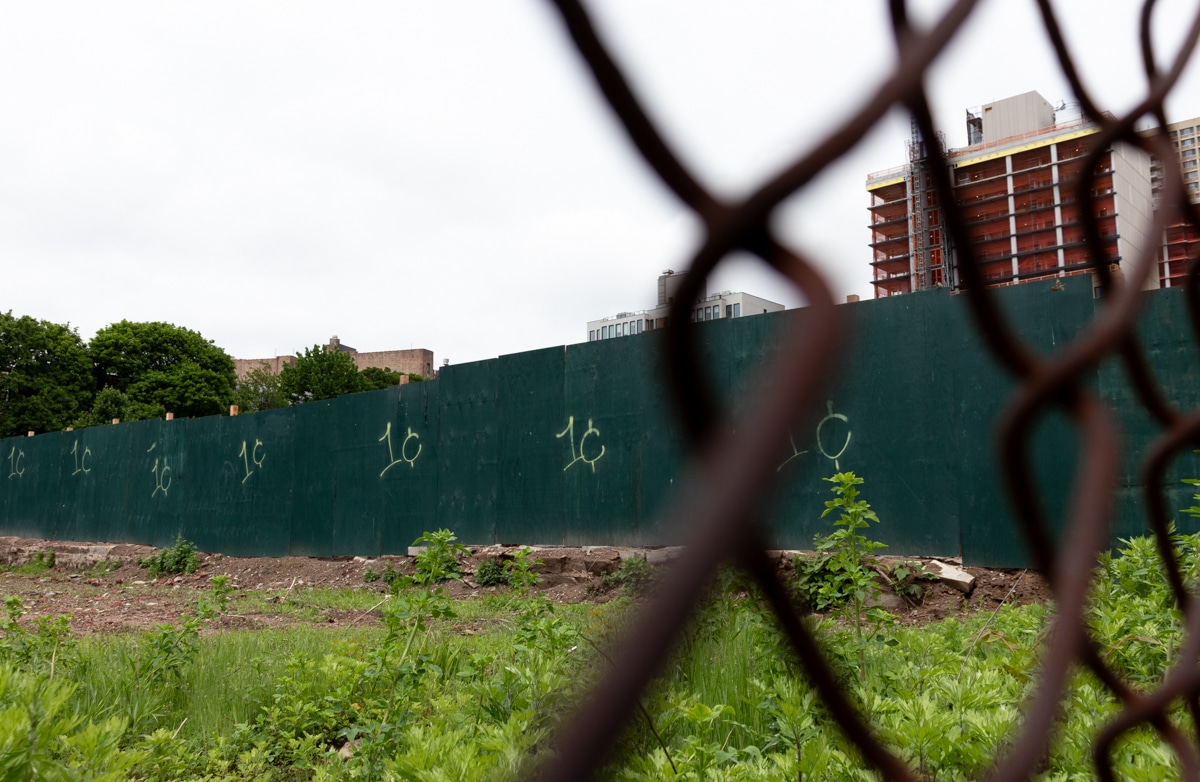
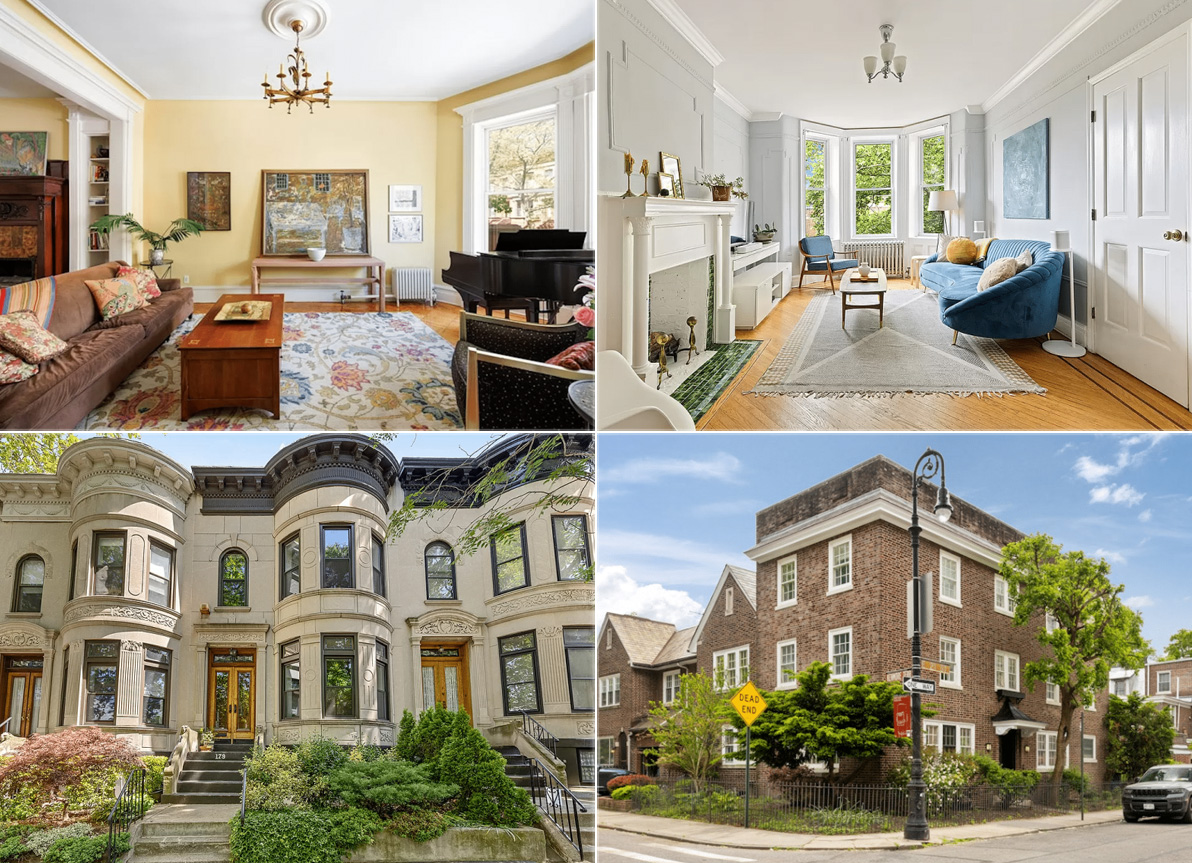
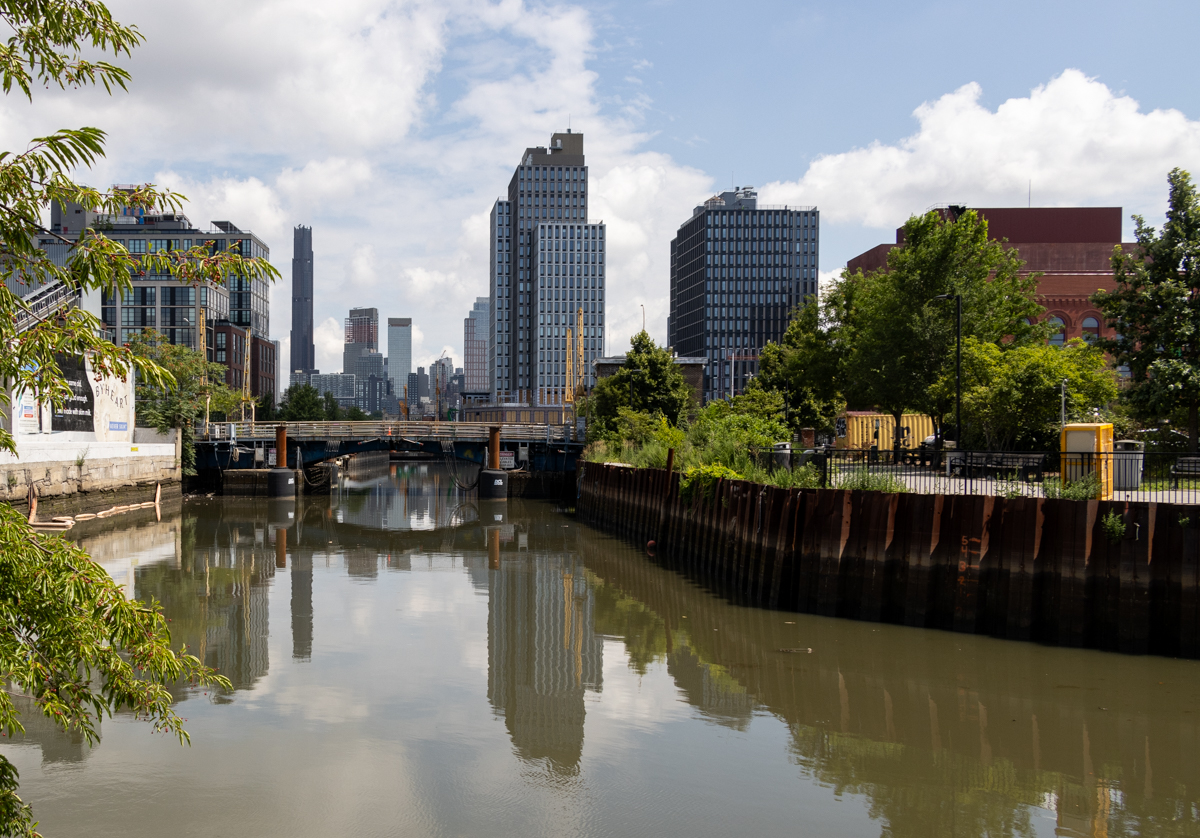
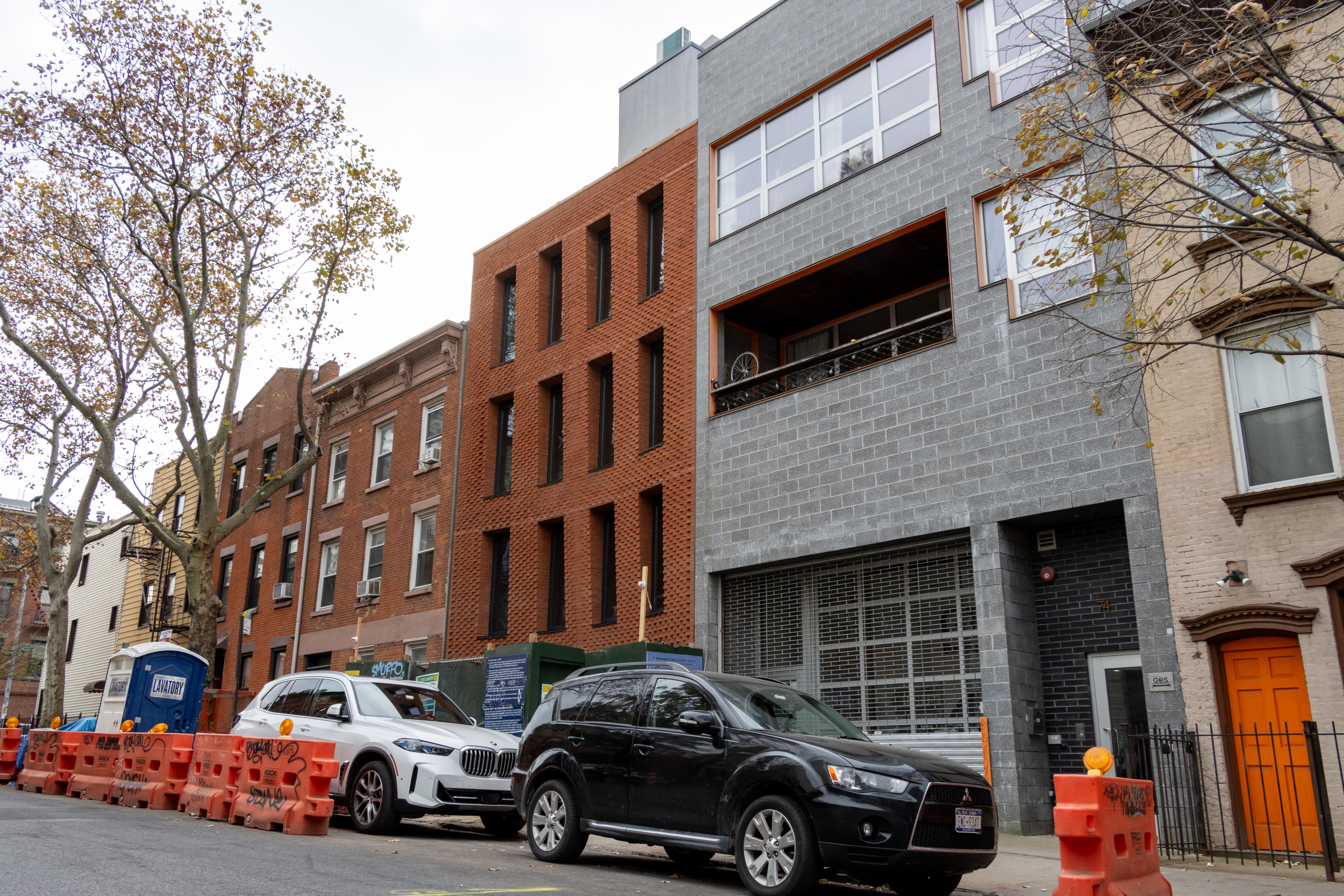




Both the Vendome and the Alhambra were burnt out hulks when I first saw them. Montrosse, you must remember that. The Vendome had no roof, it was a pitiful shell and the Alhambra looked like something from after a war. Most of its roof was gone as well. Thanks mostly to PUBLIC MONEY, yes the same kind that is supposed to buy new streeetlights, these luxury buildings were rebuilt and their exteriors painstakingly restored, based mostly on photos, to their original appearance. It was not necessary to spend all that money on the restoration of geegaws and mansards and dormer windows, but it was done, and now everyone celebrates it. I am extremely happy the work was done. Another few years and both buildings would have been too far gone to be saved.
I am sure posters like Rob, who is opposed to everything he doesn’t understand, would have been appalled that all sorts of tax breaks and subsidies were given to private parties for the aesthetic restoration of these two old historic buildings.
LOVE theseposts Mr. Morris!!!
Thank you
This is my favorite WWM to date.
why the dig on houses of ill repute. Not nice.
I love that Alhambra building so much. God I wish somebody would restore that edifice to its rightful glory.
Hear hear
Simply wonderful, informative posts. Thanks so much
i do love these posts 🙂
ETA – can i get an AMEN!? 🙂
*rob*
i do love these posts 🙂
ETA – can i get an AMEN!? 🙂
*rob*